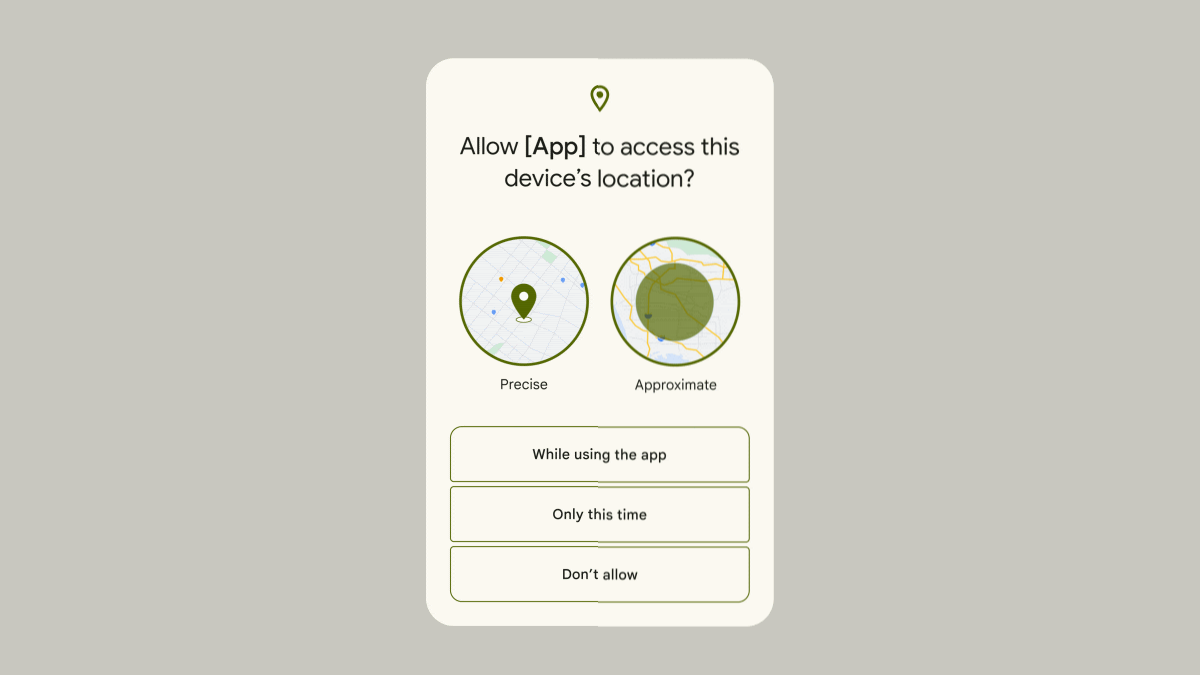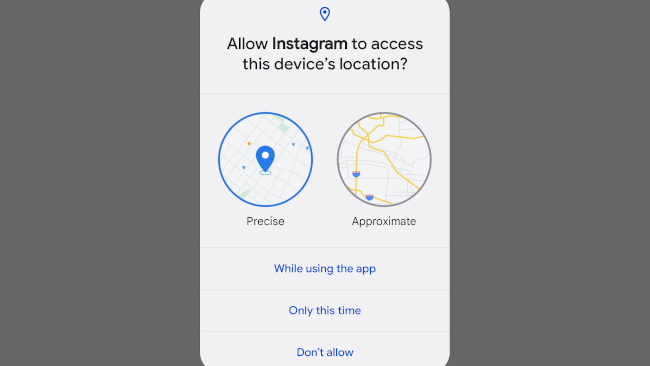
Understanding Exact vs Estimated Location Tracking in Android Devices

Understanding Exact vs Estimated Location Tracking in Android Devices
Quick Links
For a long time, granting an app permission to access your location meant one thing—your exact location. Nowadays, Android gives you two choices—“Precise” and “Approximate.” There is a big difference between the two options.
Google followed in Apple’s footsteps with the introduction of “Precise” and “Approximate” location access in Android 12 . Previously, you could restrict an app to use your location only once or only while using the app, but it was still your exact location.
Related: With iOS 15, the iPhone Stays Ahead of Android in Privacy
Precise vs. Approximate
The difference between “Precise” and “Approximate” is pretty self-explanatory. It’s essentially the difference between telling someone your street address versus telling them the city you live in.
“Precise” location uses your phone’s sensors—GPS, mostly—to determine your exact location. At best, it can figure out where you are down to the meter. “Approximate” location uses Wi-Fi and cellular data to locate you within 100 meters.
Technically, this has always been an option in Android, but it was a system-wide switch. That meant sacrificing the functionality of apps that legitimately need your precise location to restrict all apps. Starting in Android 12, individual apps will give you the choice.
Why Does This Matter?

So what’s the big deal about “Precise” and “Approximate,” anyway? Stop and think about the apps that use your location. Weather apps. Shopping apps. Social media apps. Navigation apps. How many of these need to know your exact location?
Sure, Google Maps needs to know your precise location to help you get around, that makes sense. Does a weather app need to know your address to tell you the weather in your city? Not really. Does Instagram need it to show you places nearby? Nope.
There are a lot of situations where a general location is just as useful as an exact street address. That’s the benefit of the “Approximate” location permission. It allows you to say “yes, I live in this area, but that’s all you need to know.”
Will Apps Support It?
The question with new Android features is always: which apps will actually support it? Apps built for Android 12 and above are required to support the feature, but, of course, many apps existed long before Android 12.
“Precise” and “Approximate” are available for apps built for earlier versions of Android, but there are some complications. For example, I can set Instagram’s location access to “Approximate,” but when I try to use a location-based feature, it asks me to enable “Precise.” I shouldn’t need to do that.
The same thing happens with a weather app I use. It asks me to enable “Precise” location, yet the app works perfectly fine if I select “Keep Approximate Location.” As with all new Android features , there’s going to be a break-in period.
Related: What Is the Privacy Dashboard on Android?
Also read:
- [Updated] 2024 Approved How to Add Radial Blur Effect to Photos in Photoshop
- From Novice to Host: Crafting the Perfect At-Home Karaoke Experience
- Get the Latest Updates for Your Canon MG2520: Windows Compatible Drivers Available Now
- GoPro Datei Recovery Guide: Wie Gelöschte Bilder Und Videos Wiederhergestellt Werden
- In 2024, How to Unlock Motorola Defy 2 Phone without Any Data Loss
- OnePlus 11 5G support - Forgotten screen lock.
- Top-Rated Outdoor Television Sets Featured by Experts | TechRadar
- Top-Rated TV Monitor Cleansing Solutions of 2024 - Expert Picks by ZDNet
- Top-Rated TV Monitor Refreshing Solutions: 2024'S Premier Guide – ZDNet
- Top-Tier Audio Experience Unmatched by Bose or Sonos - Discover the Alternative on ZDNet
- Title: Understanding Exact vs Estimated Location Tracking in Android Devices
- Author: Richard
- Created at : 2024-12-18 22:42:19
- Updated at : 2024-12-22 10:26:11
- Link: https://hardware-updates.techidaily.com/understanding-exact-vs-estimated-location-tracking-in-android-devices/
- License: This work is licensed under CC BY-NC-SA 4.0.